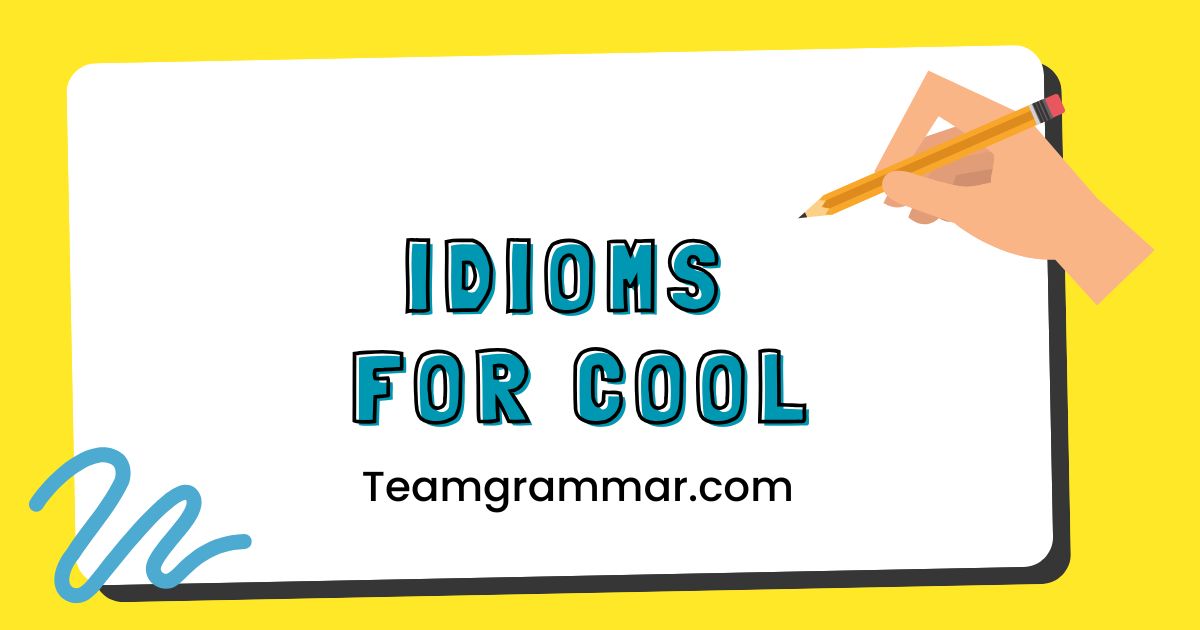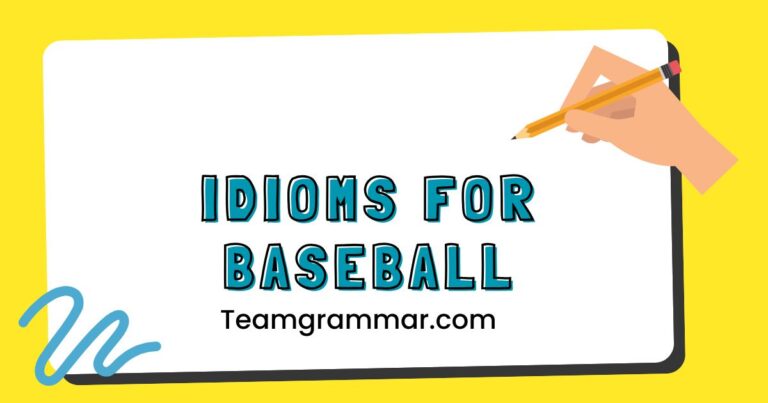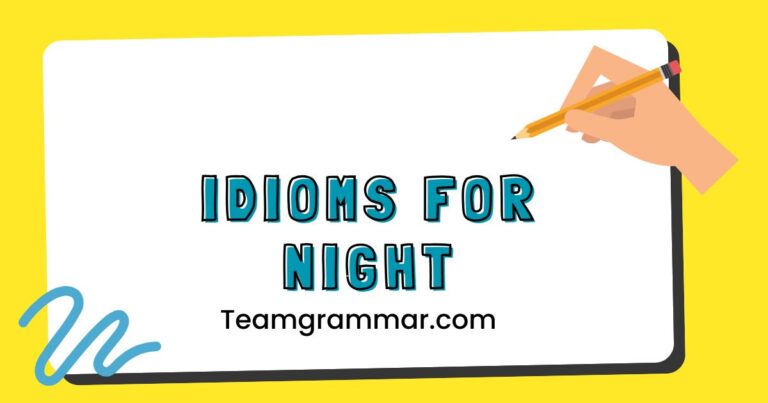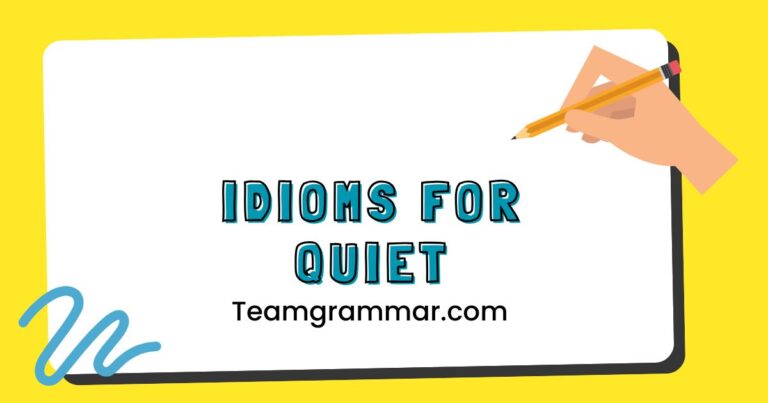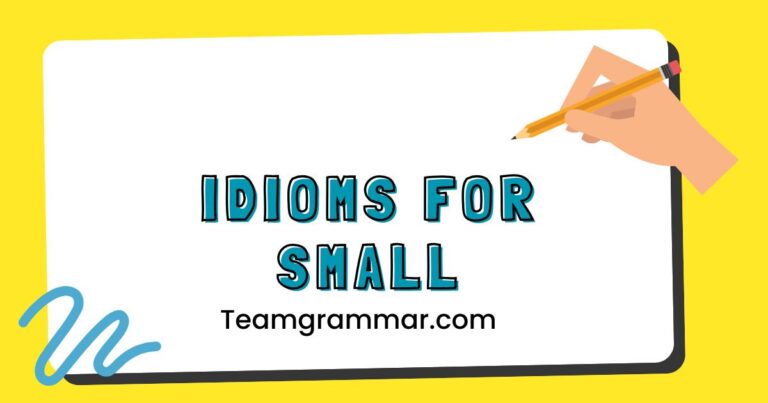29 Idioms for Cool: Mastering Slang to Sound Like a Native
Understanding idioms related to “coolness” is crucial for anyone aiming to grasp the nuances of English, especially in informal settings. These expressions go beyond literal meanings, offering insights into cultural attitudes and social dynamics.
This article explores a variety of idioms that convey different aspects of being “cool,” from being fashionable and impressive to being calm and composed. This guide is perfect for English language learners, travelers, and anyone interested in expanding their vocabulary and cultural understanding.
By mastering these idioms, you can enhance your communication skills, better understand native speakers, and confidently navigate social situations. We will cover definitions, structural breakdowns, usage rules, common mistakes, and provide practice exercises to solidify your knowledge.
This comprehensive guide aims to make you sound not just correct, but also genuinely cool in your English conversations.
Table of Contents
- Introduction
- Definition of “Cool” Idioms
- Structural Breakdown
- Types and Categories of “Cool” Idioms
- Idioms Related to Fashion and Style
- Idioms Related to Attitude and Demeanor
- Idioms Related to Impressiveness and Skill
- Idioms Related to Calmness and Composure
- Examples of “Cool” Idioms
- Fashion and Style Examples
- Attitude and Demeanor Examples
- Impressiveness and Skill Examples
- Calmness and Composure Examples
- Usage Rules for “Cool” Idioms
- Common Mistakes with “Cool” Idioms
- Practice Exercises
- Advanced Topics
- FAQ
- Conclusion
Definition of “Cool” Idioms
Idioms are phrases or expressions whose meanings cannot be understood from the literal definitions of the individual words. “Cool” idioms are a subset of these expressions that specifically relate to concepts of being fashionable, impressive, calm, or socially adept.
They are often informal and add color and personality to language. These idioms are essential for understanding and participating in casual conversations, especially among younger generations or within specific subcultures.
The classification of “cool” idioms can be based on the specific aspect of “coolness” they represent. For example, some idioms focus on physical appearance and style, while others emphasize inner qualities like confidence or composure.
Understanding these classifications can help you choose the right idiom for the context.
The function of these idioms is to convey a sense of approval, admiration, or agreement. They allow speakers to express their opinions in a concise and impactful way, often adding humor or emphasis.
Furthermore, mastering these idioms can significantly enhance your ability to understand and appreciate English-language media, such as movies, music, and literature.
Structural Breakdown
The structure of “cool” idioms varies, but many follow common patterns. Some are simple phrases consisting of a few words, while others are more complex and may include clauses.
It’s crucial to understand these structures to use the idioms correctly and to avoid misinterpretations.
Many idioms use metaphorical language, where a word or phrase is applied to an object or action to which it is not literally applicable. For example, “ice-cold” doesn’t literally mean something is frozen, but rather that someone is extremely calm or detached.
Recognizing the metaphorical basis of an idiom can aid in understanding its meaning.
The grammatical structure of an idiom may not always conform to standard English grammar. Idioms are often fixed expressions, meaning their form cannot be altered without changing their meaning or making them nonsensical.
For instance, you can’t change “cool as a cucumber” to “cool like a cucumber” without sounding unnatural.
Types and Categories of “Cool” Idioms
Here’s a breakdown of the different categories of “cool” idioms, each focusing on a distinct aspect of coolness.
Idioms Related to Fashion and Style
These idioms describe someone who is fashionable, stylish, and up-to-date with the latest trends. They often involve metaphors related to clothing, accessories, or overall appearance.
Idioms Related to Attitude and Demeanor
These idioms refer to someone who has a confident, laid-back, or impressive attitude. They often describe personality traits that are considered desirable or admirable.
Idioms Related to Impressiveness and Skill
These idioms describe someone who is highly skilled, talented, or successful in a particular area. They often use metaphors related to performance, achievement, or expertise.
Idioms Related to Calmness and Composure
These idioms describe someone who remains calm, composed, and unflappable in stressful or challenging situations. They often use metaphors related to temperature, weather, or emotional stability.
Examples of “Cool” Idioms
Here are several examples of “cool” idioms, categorized by the aspects of coolness they represent. Each example is provided within a sentence to better understand its usage.
Fashion and Style Examples
This section provides examples of idioms that relate to fashion and style. Each idiom is presented in a sentence to illustrate its use in context.
The table below contains 25 examples.
| Idiom | Meaning | Example Sentence |
|---|---|---|
| Dressed to kill | Wearing very attractive or impressive clothes | She was dressed to kill for her date, wearing a stunning red dress. |
| Sharp-dressed man | A man who wears stylish and elegant clothes | He’s always been a sharp-dressed man, no matter the occasion. |
| Look like a million bucks | To look very attractive and well-groomed | After the makeover, she looked like a million bucks. |
| Fashion-forward | Being ahead of current fashion trends | The designer is known for creating fashion-forward designs that set the trends. |
| All the rage | Very popular and fashionable at the moment | That new hairstyle is all the rage among teenagers. |
| Hip | Fashionable and trendy | That’s a very hip cafe – I’ve seen a lot of influencers there. |
| Trendy | Currently fashionable or popular | Those sneakers are very trendy right now. |
| In vogue | Fashionable; in style | Bell-bottom jeans are in vogue again. |
| Cutting-edge | Highly advanced and innovative, especially in fashion | The fashion show featured cutting-edge designs that pushed the boundaries of style. |
| Swag | Stylish confidence and an impressive manner of presentation | He walked into the room with so much swag, everyone noticed him. |
| On fleek | Perfectly styled or executed (slang, often regarding eyebrows or makeup) | Her eyebrows are always on fleek; she’s a makeup expert. |
| High-end | Expensive and of superior quality | She only wears high-end designer clothes. |
| Well-heeled | Wearing expensive or fashionable shoes; wealthy | The well-heeled guests arrived in their finest attire. |
| Chic | Elegantly and stylishly fashionable | She always looks so chic in her simple yet elegant outfits. |
| Snazzy | Attractive and stylish in a showy way | He wore a snazzy suit to the party. |
| Dashing | Attractive, stylish, and confident (usually used for men) | He looked quite dashing in his tuxedo. |
| Like something out of a magazine | Looking extremely stylish and perfect | Her outfit looked like something out of a magazine, it was so well put together. |
| A la mode | Fashionable; stylish | Her designs are always a la mode. |
| Stylin’ | Looking very stylish (slang) | You’re really stylin’ in that new jacket! |
| Put-together | Neat, stylish, and well-coordinated | She always looks so put-together, even on casual days. |
| Drip | Stylish, cool, and fashionable (slang) | That outfit is pure drip! |
| On point | Perfectly done or stylish | Her makeup is always on point. |
| Slick | Stylish and sophisticated | That’s a really slick new car. |
| Fly | Very stylish or cool (slang) | Those shoes are fly! |
| Steezy | A combination of style and ease (slang) | He’s got that steezy look down perfectly. |
Attitude and Demeanor Examples
This section provides idioms related to attitude and demeanor. The examples showcase how these idioms are used to describe someone’s personality or behavior.
This table contains 25 examples.
| Idiom | Meaning | Example Sentence |
|---|---|---|
| Cool cat | A person who is fashionable, laid-back, and admired | He’s a real cool cat; everyone wants to be around him. |
| Smooth operator | Someone who is charming and persuasive, often in a slightly dishonest way | He’s a smooth operator, always knowing what to say to get what he wants. |
| The real deal | Authentic and genuine | She’s the real deal; she doesn’t pretend to be someone she’s not. |
| With it | Aware of current trends and information | He’s still with it, even in his 70s. |
| On the ball | Alert, competent, and efficient | She’s really on the ball; she never misses a deadline. |
| Got it going on | Successful, attractive, and confident | She’s got it going on; she’s smart, beautiful, and successful. |
| Knows what’s up | Aware of what is really happening | He knows what’s up; you can’t fool him. |
| Tough cookie | A strong and resilient person | She’s a tough cookie; she can handle anything. |
| No-nonsense | Practical and serious | She’s a no-nonsense kind of person. |
| Go-getter | An ambitious and energetic person | He’s a real go-getter; he’s always striving for more. |
| Self-possessed | Calm, confident, and in control of one’s emotions | She remained self-possessed even under pressure. |
| Unflappable | Having or showing calmness, especially in a crisis | He’s completely unflappable, even when things go wrong. |
| Level-headed | Calm and sensible | She’s very level-headed in a crisis. |
| Take it in stride | To accept and deal with difficulties calmly | He took the setback in stride and moved on. |
| Keep your cool | To remain calm and composed | It’s important to keep your cool in stressful situations. |
| Play it cool | To act calm and unconcerned | She tried to play it cool, but she was obviously excited. |
| Keep a stiff upper lip | To remain brave and not show emotion in the face of adversity | He kept a stiff upper lip, even after the bad news. |
| Not bat an eye | To show no surprise or concern | She didn’t bat an eye when she heard the news. |
| Chill | To relax and be calm | Just chill and enjoy the moment. |
| Laid-back | Relaxed and easy-going | He has a very laid-back attitude. |
| Easygoing | Relaxed and tolerant | She’s a very easygoing person. |
| Mellow | Relaxed and calm | He’s in a mellow mood today. |
| Go with the flow | To be flexible and adapt to circumstances | Just go with the flow and see what happens. |
| Roll with the punches | To adapt to difficulties | You have to roll with the punches in this business. |
| Chill pill | Something that calms you down | You need to take a chill pill and relax. |
Impressiveness and Skill Examples
This section lists idioms that describe impressiveness and skill. Each idiom is used in a sentence to illustrate its meaning and usage.
This table contains 25 examples.
| Idiom | Meaning | Example Sentence |
|---|---|---|
| Ace in the hole | A hidden advantage or resource | He had an ace in the hole that no one knew about. |
| Top-notch | Of the highest quality | The service at the hotel was top-notch. |
| Cream of the crop | The best of a group | These students are the cream of the crop. |
| A cut above | Superior to others | Her work is a cut above the rest. |
| World-class | Of the highest standard in the world | The athlete is a world-class performer. |
| State-of-the-art | Using the latest technology | The hospital has state-of-the-art equipment. |
| Ahead of the curve | Innovative and advanced | The company is always ahead of the curve. |
| Raise the bar | To set a higher standard | He raised the bar for everyone else. |
| Knock it out of the park | To do something exceptionally well | She really knocked it out of the park with her presentation. |
| Master of the game | Expert in a particular field | He’s a master of the game when it comes to investing. |
| At the top of your game | Performing at your best | She’s really at the top of her game right now. |
| Got game | Has skill or talent (slang) | He’s got game when it comes to basketball. |
| Pro | Highly skilled | He’s a pro at coding. |
| A natural | Someone who is naturally good at something | She’s a natural at playing the piano. |
| Gifted | Having exceptional talent or natural ability | He’s a gifted musician. |
| Talented | Having a natural aptitude or skill for something | She’s a very talented artist. |
| Virtuoso | A person highly skilled in music or another artistic pursuit | He’s a piano virtuoso. |
| Hotshot | A talented and successful person | He’s a real hotshot in the business world. |
| Whiz | A person who is extremely clever or skilled | He’s a computer whiz. |
| Guru | An expert in a particular field | He’s a marketing guru. |
| Maven | An expert or connoisseur | She’s a fashion maven. |
| Authority | A recognized expert on a subject | He’s an authority on ancient history. |
| Go-to person | Someone who is reliable and knowledgeable | She’s the go-to person for any technical issues. |
| Well-versed | Knowledgeable about a particular subject | He’s well-versed in literature. |
| Knows their stuff | Knowledgeable and competent | She really knows her stuff when it comes to finance. |
Calmness and Composure Examples
This section provides idioms that describe calmness and composure. The idioms illustrate how individuals remain calm and composed in different situations.
This table contains 25 examples.
| Idiom | Meaning | Example Sentence |
|---|---|---|
| Cool as a cucumber | Very calm and composed, especially in a difficult situation | He was cool as a cucumber during the crisis. |
| Keep your shirt on | Stay calm and don’t get angry | Keep your shirt on; I’m almost finished. |
| Take a chill pill | Relax and calm down | You need to take a chill pill and stop worrying so much. |
| Keep a level head | Stay calm and sensible | It’s important to keep a level head in an emergency. |
| Steady on | Calm down; don’t get too excited | Steady on, let’s think about this calmly. |
| Calm, cool, and collected | Relaxed, self-assured, and in control | She remained calm, cool, and collected throughout the presentation. |
| Not lose your head | To not panic or become irrational | He didn’t lose his head, even when things got tough. |
| In the zone | Focused and calm, performing at your best | She was in the zone during the competition. |
| Unfazed | Not disturbed or surprised | He seemed unfazed by the criticism. |
| Composed | Calm and self-possessed | She remained composed despite the pressure. |
| Collected | Calm and in control of one’s emotions | He was very collected when he gave his speech. |
| Poised | Having a composed and self-assured manner | She was poised and confident during the interview. |
| Serene | Calm, peaceful, and untroubled | She had a serene expression on her face. |
| Tranquil | Calm and peaceful | The lake was tranquil in the early morning. |
| At peace | Calm and content | He seemed at peace with himself. |
| Even-tempered | Not easily annoyed or angered | She’s very even-tempered and patient. |
| Patient | Able to accept delays or suffering without complaint | He’s a very patient person. |
| Tolerant | Showing willingness to allow the existence of opinions or behavior that one does not necessarily agree with | She’s very tolerant of other people’s views. |
| Forgiving | Willing to forgive | She’s a very forgiving person. |
| Nonchalant | Appearing casually calm and relaxed; not displaying anxiety, interest, or enthusiasm | He tried to appear nonchalant, but he was nervous. |
| Detached | Emotionally separated; not involved | He remained detached from the situation. |
| Aloof | Not friendly or forthcoming; cool and distant | She seemed aloof and uninterested. |
| Reserved | Slow to reveal emotion or opinions | He’s a very reserved person. |
| Under control | Being managed or directed effectively | He has the situation under control. |
| In hand | Being dealt with effectively | The problem is in hand. |
Usage Rules for “Cool” Idioms
Using “cool” idioms correctly requires understanding their specific contexts and connotations. Many of these idioms are informal and should be avoided in formal writing or professional settings unless you are certain that your audience will understand and appreciate them.
The key is to gauge your audience and the overall tone of the communication.
Pay attention to the grammatical structure of each idiom. As fixed expressions, their word order and form cannot be changed without altering their meaning or sounding unnatural.
For example, “cool as a cucumber” must remain in that exact order.
Be mindful of the cultural context. Some idioms may be specific to certain regions or subcultures, and using them outside of these contexts may lead to confusion or misinterpretation.
Research the origin and usage of an idiom if you are unsure about its appropriateness.
Common Mistakes with “Cool” Idioms
One common mistake is using idioms out of context. For example, using a fashion-related idiom to describe someone’s personality would be inappropriate.
Another error is altering the structure of the idiom. Changing “cool as a cucumber” to “cucumber cool” completely changes the meaning.
Lastly, be wary of using outdated idioms. Language evolves, and some idioms may no longer be in common use.
Here are some examples of common mistakes:
| Incorrect | Correct | Explanation |
|---|---|---|
| He is cucumber as cool. | He is cool as a cucumber. | The word order is incorrect. |
| She dressed to kill the presentation. | She knocked it out of the park with her presentation. | “Dressed to kill” refers to appearance, not performance. |
| He’s very with-it yesterday. | He’s very with it. | The idiom “with it” doesn’t require a time reference, and using past tense is incorrect. |
Practice Exercises
Test your understanding of “cool” idioms with the following exercises. Choose the correct idiom to complete each sentence.
| Question | Options | Answer |
|---|---|---|
| 1. She always looks so ____ when she goes out. | a) cool as a cucumber, b) dressed to kill, c) on the ball | b) dressed to kill |
| 2. He’s a ____; he always knows what’s going on. | a) cool cat, b) tough cookie, c) ace in the hole | a) cool cat |
| 3. She really ____ with her performance. | a) kept her shirt on, b) knocked it out of the park, c) took a chill pill | b) knocked it out of the park |
| 4. You need to ____ and relax. | a) keep a level head, b) take a chill pill, c) stay steady on | b) take a chill pill |
| 5. He’s always ____; he never gets stressed. | a) on the ball, b) cool as a cucumber, c) the real deal | b) cool as a cucumber |
| 6. She’s a ____; she’s always prepared and efficient. | a) smooth operator, b) on the ball, c) cream of the crop | b) on the ball |
| 7. Just ____ and see what happens. | a) go with the flow, b) keep your cool, c) play it cool | a) go with the flow |
| 8. He’s ____, always calm and sensible. | a) level-headed, b) unflappable, c) easygoing | a) level-headed |
| 9. She’s ____, always adaptable and resilient. | a) a pro, b) a natural, c) a tough cookie | c) a tough cookie |
| 10. He’s ____ when it comes to computers. | a) a whiz, b) a guru, c) a maven | a) a whiz |
Advanced Topics
For advanced learners, exploring the historical and cultural origins of “cool” idioms can provide deeper insights into their meanings and usage. Additionally, studying the evolution of slang and its impact on the development of new idioms can enhance your understanding of contemporary English.
Analyzing the use of “cool” idioms in literature and film can also offer valuable context and examples.
Furthermore, consider researching the differences in “cool” idioms across different English-speaking countries. For example, idioms used in the United States may differ from those used in the United Kingdom or Australia.
Understanding these regional variations can help you avoid misunderstandings and communicate more effectively with people from diverse backgrounds.
Finally, explore the use of “cool” idioms in professional contexts. While many of these idioms are informal, some can be used strategically to build rapport and establish a connection with colleagues or clients.
However, it’s essential to use them judiciously and be aware of the potential risks of misinterpretation or offense.
FAQ
- What is an idiom?
An idiom is a phrase or expression whose meaning cannot be understood from the literal definitions of the individual words. Idioms often have a figurative or metaphorical meaning that is different from their literal interpretation.
- Why is it important to learn idioms?
Learning idioms is crucial for understanding and participating in natural, everyday conversations in English. Native speakers frequently use idioms, and knowing them can help you grasp the intended meaning and avoid misunderstandings. Additionally, using idioms correctly can make your own speech more expressive and engaging.
- Are “cool” idioms only used by young people?
While some “cool” idioms are more commonly used by younger generations, many are widely understood and used by people of all ages. However, it’s essential to be aware of the specific context and audience when using these expressions to ensure they are appropriate and well-received.
- How can I learn new “cool” idioms?
There are several ways to learn new “cool” idioms. One effective method is to pay attention to how native speakers use them in conversations, movies, TV shows, and books. You can also consult idiom dictionaries and online resources that provide definitions and examples of usage. Finally, practice using new idioms in your own speech and writing to reinforce your understanding.
- Can I use “cool” idioms in formal writing?
In general, “cool” idioms should be avoided in formal writing, such as academic papers or business reports. These expressions are typically informal and may not be appropriate for a formal tone. However, there may be exceptions in creative writing or when trying to establish a specific voice or style.
- What should I do if I don’t understand an idiom?
If you encounter an idiom that you don’t understand, the best approach is to ask for clarification. You can politely ask the speaker to explain the meaning of the idiom or provide an alternative way of expressing the same idea. You can also consult a dictionary or online resource to look up the definition of the idiom.
- Are “cool” idioms the same in all English-speaking countries?
No, “cool” idioms can vary significantly across different English-speaking countries. Some idioms may be specific to certain regions or cultures, while others may have different meanings or connotations in different countries. It’s essential to be aware of these regional variations to avoid misunderstandings and communicate effectively with people from diverse backgrounds.
- How can I avoid misusing “cool” idioms?
To avoid misusing “cool” idioms, it’s crucial to understand their specific meanings and contexts. Pay attention to how native speakers use them and practice using them yourself. If you’re unsure about the appropriateness of an idiom, it’s best to err on the side of caution and use a more neutral expression.
- What are some resources for learning more about idioms?
There are many resources available for learning more about idioms, including idiom dictionaries, online databases, and language learning websites. Some popular resources include the Oxford Idioms Dictionary, the Cambridge Idioms Dictionary, and websites like Grammarly and Merriam-Webster.
- How do I know if an idiom is outdated?
Determining if an idiom is outdated can be tricky, as language evolves constantly. One way is to observe how frequently the idiom is used in contemporary conversations, media, and literature. If you rarely hear or see the idiom being used, it may be becoming outdated. Consulting with native speakers or language experts can also provide valuable insights.
Conclusion
Mastering “cool” idioms is an essential step towards achieving fluency and cultural competence in English. These expressions add color, personality, and nuance to your communication, allowing you to express yourself more effectively and understand native speakers more deeply.
By understanding the definitions, structural breakdowns, usage rules, and common mistakes associated with these idioms, you can confidently incorporate them into your vocabulary.

